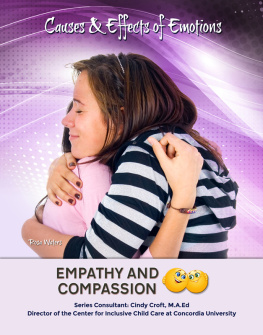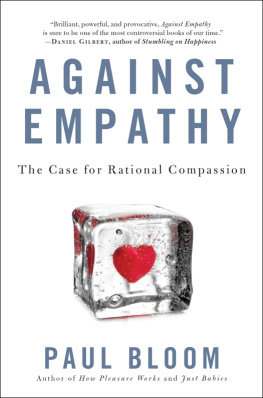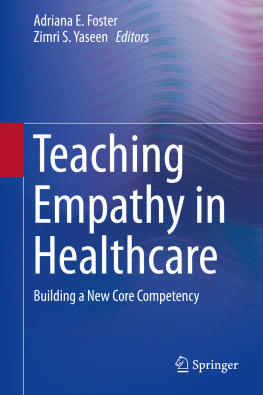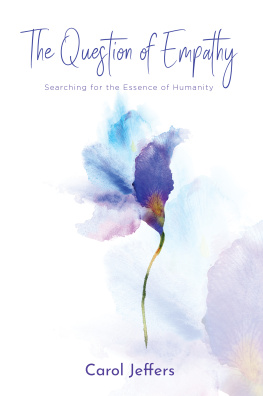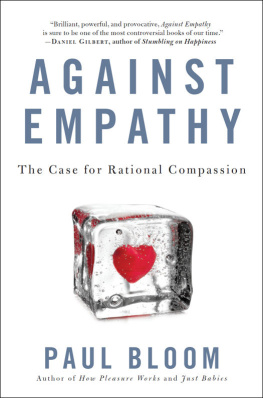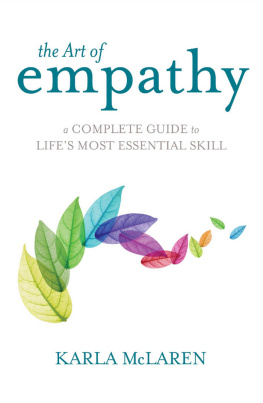The Space Between

Oxford University Press is a department of the University of Oxford. It furthers the Universitys objective of excellence in research, scholarship, and education by publishing worldwide. Oxford is a registered trade mark of Oxford University Press in the UK and certain other countries.
Published in the United States of America by Oxford University Press
198 Madison Avenue, New York, NY 10016, United States of America.
Oxford University Press 2022
All rights reserved. No part of this publication may be reproduced, stored in a retrieval system, or transmitted, in any form or by any means, without the prior permission in writing of Oxford University Press, or as expressly permitted by law, by license, or under terms agreed with the appropriate reproduction rights organization. Inquiries concerning reproduction outside the scope of the above should be sent to the Rights Department, Oxford University Press, at the address above.
You must not circulate this work in any other form and you must impose this same condition on any acquirer.
Library of Congress Control Number: 2022930912
ISBN 9780197637081
eISBN 9780197637104
DOI: 10.1093/oso/9780197637081.001.0001
But let us, forsooth, my philosophic colleagues, henceforward guard ourselves more carefully against this mythology of dangerous ancient ideas, which has set up a pure, will-less, painless, timeless subject of knowledge; let us guard ourselves from the tentacles of such contradictory ideas as pure reason, absolute spirituality, knowledge-in-itself:in these theories an eye that cannot be thought of is required to think, an eye which ex hypothesi has no direction at all, an eye in which the active and interpreting functions are cramped, are absent; those functions, I say, by means of which abstract seeing first became seeing something; in these theories consequently the absurd and the non-sensical is always demanded of the eye. There is only a seeing from a perspective, only a knowing from a perspective, and the more emotions we express over a thing, the more eyes, different eyes, we train on the same thing, the more complete will be our idea of that thing, our objectivity. But the elimination of the will altogether, the switching off of the emotions all and sundry, granted that we could do so, what! would not that be called intellectual castration?
Friedrich Nietzsche: The Genealogy of Morals III, 12
Contents
This book is the culmination of more than six years research, and many people have contributed to it by discussing my ideas with me. Of those who have supported my work on the manuscript and offered invaluable comments, Anthony Jack stands out. We have spent hours discussing empathy and he has read through the entire manuscript and commented on it. The book wouldnt have been the same without him. Jenefer Robinson is another person whose assistance has been invaluable. She has read various versions of the book and helped me think through many of the difficult issues. At the very end of the process, as I was grappling with how to illustrate the manuscript, my old friend Peter Bruce stepped in and provided the beautiful drawings you see in the book. Thanks, Peter! My PhD student, Kyle Furlane, has been a great discussant and pointed me to some of the studies I discuss in . I also benefited greatly from comments on the first part of the book from a reading group at York University led by Evan Wenstra and Kristin Andrews. The research group at the Institute for Logic, Cognition, Language, and Information (ILCLI) at the University of the Basque Country read through my manuscript in the final stages. Zvi Biener, Kate Sorrels, Jeanne-Marie Musca, Tom Polger, Valerie Hardcastle, Larry Jost, Colin Marshall, and Peter Langland-Hassan read the zygote version of some of those chapters and their reflections helped guide my writing. Angela Potochnik, Tony Chemero, and Vanessa Carbonell assisted me greatly by commenting on more mature chapters. Kyle Snyder provided comments and criticisms that helped me make the central argument of the book clearer and more focused. I am grateful to all! Thanks also go to my editor at Oxford, Peter Ohlin, for pushing me to crystallize my ideas better.
In 201617, I was a Taft Center fellow, which allowed me ample time to develop my ideas in concert with two other fellows, Arya Finkelstein and Gergana Ivanova. Karsten Stueber visited at the end of the fellowship and commented on the first half of the manuscript. His wise input made the book a great deal better than it would otherwise have been. The Taft Center had already provided invaluable support the previous year, when it helped finance a visit to Macquarie University in Sydney. Here, Jeanette Kennett led a seminar, where we discussed early chapters of the book. I learned much from that.
I have given talks on various parts of this book to audiences of the ILCLI research group at the University of the Basque Country, the Center for Philosophy and Psychology at the University of Antwerp, and the philosophy departments of Indiana University South Bend, Southern Illinois University, Roskilde University, University of Rijeka, Macquarie University, University of Memphis, Jadavpur University in Kolkata, University of Wollongong, Carleton University, Case Western Reserve University, University of Copenhagen, University of Manchester, University of Cincinnati, and York University. I am grateful to the audiences for frank and instructive discussions. During the summer of 2019, Francesco Orsi organized a summer school at the University of Tartu in Estonia with Bart Streumer and me. This gave me a wonderful opportunity to discuss the book with a bunch of very smart people, and to do so in an idyllic setting. Ive also benefited from discussions at conferences and workshops, such as those by the European Philosophical Society for the Study of Emotions; the European Society for Philosophy and Psychology; the International Society for Research on Emotions; the Brazilian Society for Analytic Philosophy; the Workshop on Language, Cognition, and Context; and a joint workshop between the philosophy departments at University of Cincinnati and Ohio State University.
Last but not least, I have learned a lot from presenting some of the materials here at graduate and senior seminars the University of Cincinnati. At different stages of the book, I also presented the materials to the Association for the Study of Psychoanalytic Thought in Cincinnati. I am grateful to the participants for their incisive and helpful comments and criticisms. Through it all, and particularly during the trying isolation imposed by Covid-19, my friends, family, and Crosby kept me sane (assuming, of course, that I [still] am).
The book was written while I was a professor of philosophy at the University of Cincinnati, a Taft Center fellow, and, during the final stage, an Ikerbasque research professor at ILCLI at the University of the Basque Country, and while benefiting from grants from the Basque Government (IT1032-16) and the Spanish Government (PID2019-106078GB-I00 [MCI/AEI/FEDER, UE]).
On May 1, 2009, President Barack Obama interrupted the afternoon White House press briefing to announce the retirement of Justice David Souter from the Supreme Court. It would now fall to him to appoint a new Supreme Court justice. I will seek, Obama announced,
someone who understands that justice isnt about some abstract legal theory or footnote in a case book, it is also about how our laws affect the daily realities of peoples lives.... I will seek somebody who is dedicated to the rule of law. Who honors our constitutional traditions. Who respects the integrity of the judicial process and the appropriate limits of the judicial role.



